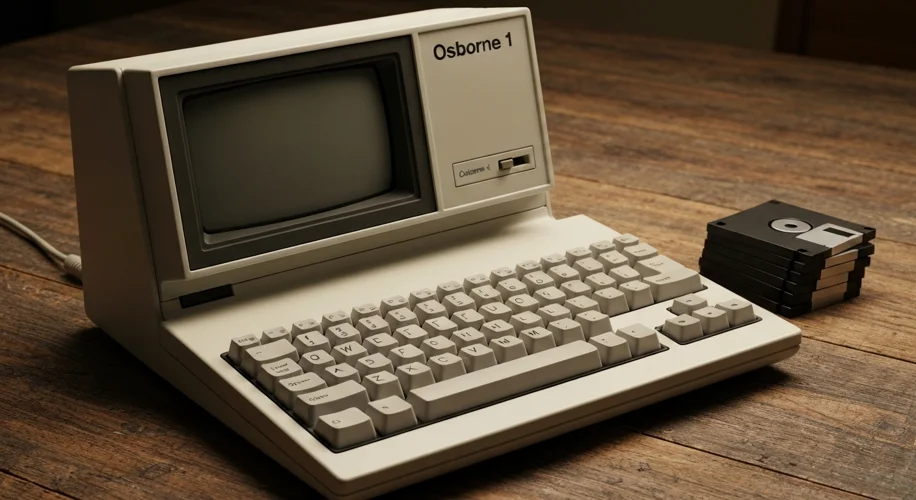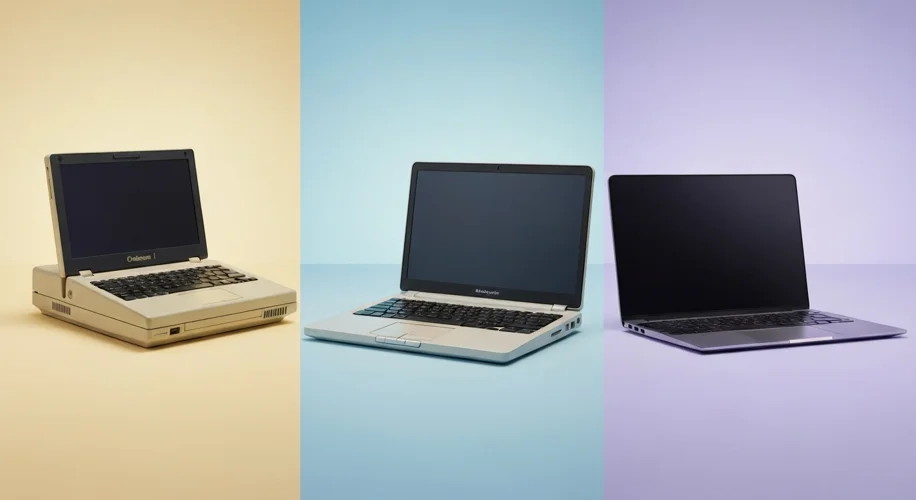In the annals of technological advancement, few inventions have reshaped our daily lives as profoundly as the portable computer, or laptop. What began as hulking, specialized machines has evolved into the sleek, indispensable devices we carry today. This is the story of that revolution.
The Seeds of Mobility: Early forays into Portable Computing
The concept of a portable computer wasn’t born overnight. The earliest pioneers faced immense challenges, grappling with bulky components, limited battery life, and the sheer audacity of miniaturizing powerful machines. One of the very first commercially successful portable computers was the Osborne 1, released in 1981. This machine, weighing a hefty 24.5 pounds, was more “transportable” than truly portable. It featured a 5-inch screen, a keyboard that folded up, and came bundled with valuable software, a shrewd move to entice buyers.

Following the Osborne 1, other contenders emerged. The Compaq Portable, also released in 1981, was another significant step, boasting IBM PC compatibility and a more integrated design. These early machines, while groundbreaking, were a far cry from the feather-light devices of today. They were rugged, often expensive, and primarily targeted at business professionals who needed computing power away from their desks.
The Dawn of True Portability: The 1980s and Beyond
The 1980s saw a surge of innovation. Companies experimented with LCD screens, floppy disk drives, and early forms of battery power. The Gavilan SC, released in 1983, is often cited as one of the first true laptops, featuring a flat panel display and a detached keyboard. However, its high price and limited production run meant it didn’t capture the mass market.
However, the true democratization of portable computing began to take shape in the mid-to-late 1980s. Companies like Toshiba, Zenith, and NEC introduced increasingly refined laptops. These machines offered better battery life, more memory, and even color screens, albeit rudimentary ones. The emphasis was on creating a device that could truly replace a desktop computer for users on the move. The idea of working from anywhere – a coffee shop, a train, or even a park bench – began to shift from science fiction to tangible reality.
Key Players and Pivotal Moments
Several companies played crucial roles in this evolutionary journey. Toshiba, for instance, released the T1100 in 1985, a machine that became immensely popular and helped establish the laptop as a viable alternative to desktops. It was relatively affordable, featured a floppy disk drive, and offered a decent battery life for its time. Zenith Data Systems also made significant contributions with its Z-181 portable computer, which gained traction among business users.
The development wasn’t just about hardware. The evolution of operating systems and software also played a vital role. The widespread adoption of MS-DOS and later Windows, with their increasingly user-friendly interfaces, made these portable machines accessible to a broader audience. The ability to run the same software as desktop computers was a critical factor in their adoption.
The Laptop Becomes Ubiquitous: The 1990s and the Rise of the Internet
The 1990s witnessed the laptop truly come into its own. Technological advancements accelerated, leading to lighter, more powerful, and more affordable machines. The introduction of CD-ROM drives, faster processors, and larger hard drives made laptops increasingly versatile. The rise of the internet and the World Wide Web further fueled demand for portable computing. Suddenly, being connected wasn’t confined to an office; it could happen anywhere.
This era saw the emergence of iconic laptop designs and brands that still resonate today. Companies like Apple, with its PowerBook series, pushed the boundaries of design and user experience, introducing features like the integrated trackball and later the touchpad, which would become a standard. IBM, with its ThinkPad line, became synonymous with robust business laptops, known for their durability and distinctive red TrackPoint pointing stick.
Transforming Work, Life, and Culture
The impact of the laptop extends far beyond mere technological convenience. It fundamentally altered how we work, learn, and communicate. The ability to work remotely became a reality for many, blurring the lines between professional and personal life. Students could carry their entire library of information with them, and professionals could stay connected and productive on the go, transforming business travel and opening up new avenues for collaboration.
From the rugged, utilitarian machines of the early 1980s to the slim, powerful devices of today, the laptop’s journey is a testament to human ingenuity and the relentless pursuit of portability. It’s a revolution that continues to unfold, with each new iteration promising even greater capabilities, further weaving itself into the fabric of our modern existence.

